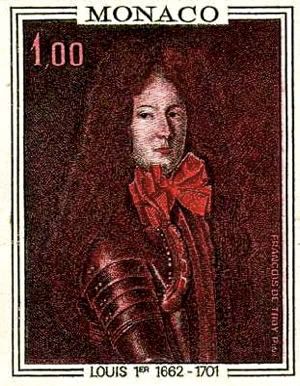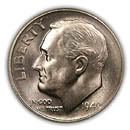Monday, January 03, 2011
"Black Dog" by Led Zeppelin
Try as I might to find depth in Led Zeppelin, as often as not the song I'm reading into is about having sex and not much else. Not that there's anything wrong with that...
The same goes for Black Dog, which I so wanted to have folkloric or psychological underpinnings, but turns out has a good beat and you can fuck to it; about all the depth it needs for that is the length of a good cock-stroke. Turns out the black dog in the title refers to an actual black dog who wandered into the studio where the band was recording the then still-unnamed song.
Birthday wishes go out today to Zep's bassist John Paul Jones, who's got his work cut out for him here; fortunately he's more than up to the job. The song, of course, is taken from their 1971 album Led Zeppelin IV while the footage is from the band's legendary gig at Earls Court in May 1975.
*
share on: facebook
Gratuitous Brunette: Dominic Wood
As if Dominic Wood isn't cute enough on his own, his day job as a TV presenter means he educates kids for a living - if that doesn't add value to the total package I don't know what will...

Of course, the secret to quality kids TV is a host who's young at heart; alas, the old at heart executives who run the business haven't always appreciated his cheekiness. The diminutive stunner was disciplined by the BBC for sporting a t-shirt on air bearing the slogan 'Morning Wood' - a sentiment his core audience wouldn't have understood but one which might have given their minders a bit of a chuckle. Which is yet another secret to good kids TV - if you throw in something for the parents maybe they'll watch it with their kids, instead of merely using the thing as an electronic babysitter.
So what's up next for the award winning Dominic Wood, who's already dom-inated radio, television, and publishing? Well, fatherhood - with his wife Sandi Lee Hughes of the (now defunct) band allSTARS* - for starters; his son Tommy turns 2 next week. Now can you say Dick and Dom in da Bungalow:The Movie boys and girls? I thought you could...
Not that such a thing is in the works, but it never hurts to plant a seed, now does it?
*
share on: facebook
Of course, the secret to quality kids TV is a host who's young at heart; alas, the old at heart executives who run the business haven't always appreciated his cheekiness. The diminutive stunner was disciplined by the BBC for sporting a t-shirt on air bearing the slogan 'Morning Wood' - a sentiment his core audience wouldn't have understood but one which might have given their minders a bit of a chuckle. Which is yet another secret to good kids TV - if you throw in something for the parents maybe they'll watch it with their kids, instead of merely using the thing as an electronic babysitter.
So what's up next for the award winning Dominic Wood, who's already dom-inated radio, television, and publishing? Well, fatherhood - with his wife Sandi Lee Hughes of the (now defunct) band allSTARS* - for starters; his son Tommy turns 2 next week. Now can you say Dick and Dom in da Bungalow:The Movie boys and girls? I thought you could...
Not that such a thing is in the works, but it never hurts to plant a seed, now does it?
*
share on: facebook
Gratuitous Brunette: Liya Kebede
Having just returned from the front (ie: Facebook), where I've been treated to a litany of reasons why Hitler's handling of the Jews was not only apt but necessary, I've decided to retreat for awhile to the comparative safety of the Pop Culture Institute, where for the most part the closest we get to current events is a pretty lady having a birthday...
 In this instance, my saviour from anti-Semitism disguised as geopolitics is Liya Kebede, the Ethiopian born model who has cat-walked her way from Addis Ababa to Manhattan via the fashion capitals of Europe. Along the way she's accumulated such accolades as an exclusive contract with Gucci (courtesy of Tom Ford) in 2000, having had an entire issue of French Vogue dedicated to her in 2002, and appointment as a WHO Goodwill Ambassador for her work with maternal, newborn, and childhood health. She's also one of only a handful of black women featured on the cover of American Vogue, most of whom are actresses.
In this instance, my saviour from anti-Semitism disguised as geopolitics is Liya Kebede, the Ethiopian born model who has cat-walked her way from Addis Ababa to Manhattan via the fashion capitals of Europe. Along the way she's accumulated such accolades as an exclusive contract with Gucci (courtesy of Tom Ford) in 2000, having had an entire issue of French Vogue dedicated to her in 2002, and appointment as a WHO Goodwill Ambassador for her work with maternal, newborn, and childhood health. She's also one of only a handful of black women featured on the cover of American Vogue, most of whom are actresses.
Yet she seems aware of the transient nature of modelling, so even while she's still getting bookings - including regular high profile gigs with Estee Lauder - it's relieving the suffering of mothers and children that inspires this mother of two herself...
*
share on: facebook
Yet she seems aware of the transient nature of modelling, so even while she's still getting bookings - including regular high profile gigs with Estee Lauder - it's relieving the suffering of mothers and children that inspires this mother of two herself...
*
share on: facebook
Remembering... Anna May Wong
One of the reasons I began this blog was to draw attention to those obscure figures from history - regardless of their field of endeavour - whose obscurity I consider unfair; I'd like to think that, fifty or a hundred years from now, some uppity know-it-all will do the same for me...
 In many ways, Anna May Wong is the ideal candidate for the Pop Culture Institute treatment; not only was she the first Asian-American actress of any note in the Hollywood cinema as far back as 1921, but until the 1970s almost the only one as well.
In many ways, Anna May Wong is the ideal candidate for the Pop Culture Institute treatment; not only was she the first Asian-American actress of any note in the Hollywood cinema as far back as 1921, but until the 1970s almost the only one as well.
Born in Los Angeles on this day in 1905 (her family having settled in the US in 1855), Wong's first film role was in the Alla Nazimova silent The Red Lantern (1919). Despite the clout a friendship with such an august presence ought to have given her, Wong struggled. This wasn't due to any lack of parts for exotic temptresses, but rather to anti-miscegenation laws in the US; she could have had her choice of parts if only they didn't require her to be romantic which, let's face it, meant that as a romantic leading lady she remained underemployed.
She did act, though, here and there: in The Toll of the Sea (1921) opposite Kenneth Harlan, in the British silent Piccadilly (1929), most famously with Marlene Dietrich in Shanghai Express (1932), and opposite George Raft in Limehouse Blues (1934). However, when she was offered the villain's part in The Good Earth (1937), and it became obvious she would be the only Asian in the cast, she balked. One of her final film roles was in the camp classic Impact (1949).
Despite romantic entanglements with director Marshall Neilan and writer Eric Maschwitz - who apparently wrote his famous song These Foolish Things (Remind Me Of You) about her - she never married; interestingly, another of Hollywood's pioneering Chinese was her cousin, famed cinematographer James Wong Howe. (For obvious reasons, he did better at the studios than she did.)
Anna May Wong died in 1961, but has since been given a star on the Hollywood Walk of Fame; as well, Frosted Yellow Willows - a documentary by Elaine May Woo and narrated by Nancy Kwan - which had its American debut in January 2008, in Los Angeles, and The Anna May Wong Society, not to mention two new biographies, have done their part to rescue her from the footnotes of Hollywood history and restore her to her rightful place among the industry's pioneers. Anna May Wong: A Complete Guide to Her Film, Stage, Radio and Television Work was written by Philip Leibfried and Chei Mi Lane and Anna May Wong: From Laundryman's Daughter to Hollywood Legend is by Graham Russell Gao Hodges.
*
share on: facebook
Born in Los Angeles on this day in 1905 (her family having settled in the US in 1855), Wong's first film role was in the Alla Nazimova silent The Red Lantern (1919). Despite the clout a friendship with such an august presence ought to have given her, Wong struggled. This wasn't due to any lack of parts for exotic temptresses, but rather to anti-miscegenation laws in the US; she could have had her choice of parts if only they didn't require her to be romantic which, let's face it, meant that as a romantic leading lady she remained underemployed.
She did act, though, here and there: in The Toll of the Sea (1921) opposite Kenneth Harlan, in the British silent Piccadilly (1929), most famously with Marlene Dietrich in Shanghai Express (1932), and opposite George Raft in Limehouse Blues (1934). However, when she was offered the villain's part in The Good Earth (1937), and it became obvious she would be the only Asian in the cast, she balked. One of her final film roles was in the camp classic Impact (1949).
Despite romantic entanglements with director Marshall Neilan and writer Eric Maschwitz - who apparently wrote his famous song These Foolish Things (Remind Me Of You) about her - she never married; interestingly, another of Hollywood's pioneering Chinese was her cousin, famed cinematographer James Wong Howe. (For obvious reasons, he did better at the studios than she did.)
Anna May Wong died in 1961, but has since been given a star on the Hollywood Walk of Fame; as well, Frosted Yellow Willows - a documentary by Elaine May Woo and narrated by Nancy Kwan - which had its American debut in January 2008, in Los Angeles, and The Anna May Wong Society, not to mention two new biographies, have done their part to rescue her from the footnotes of Hollywood history and restore her to her rightful place among the industry's pioneers. Anna May Wong: A Complete Guide to Her Film, Stage, Radio and Television Work was written by Philip Leibfried and Chei Mi Lane and Anna May Wong: From Laundryman's Daughter to Hollywood Legend is by Graham Russell Gao Hodges.
*
share on: facebook
The House of Grimaldi: The Death of Louis I
It would be just my luck that the first entry in this new ongoing series of posts on the House of Grimaldi would concern one of history's least written about - not to mention least portraited - Princes of Monaco, Louis I. Despite being Europe's oldest royal family, tracing its lineage back to Grimaldo - who served as the consul of Genoa beginning in 1162 - a highly acquiescent Monegasque press has been as scrupulous in its protection of the Grimaldi's privacy as the neighbouring French media has been fervent in reporting it. Either that or yet again my fondness for the obscure has rendered the vast content of the Internet as puny as this picture...
 Born in July 1642 to the ill-fated Prince Hercule of Monaco and Aurelia Spinola, the man who would succeed his grandfather Honoré II to become the second Prince of Monaco first served France's King Louis XIV as an ambassador; while at Versailles with his lusty wife Catherine-Charlotte de Gramont*, whom he married in May 1660, the princely couple threw themselves into the social whirl of court, which essentially involved throwing themselves into other people's beds. His brother-in-law, the well-rounded debauché the comte de Guiche, scored the one-two punch of sleeping with both halves of one married couple - Philippe I of Orléans and Henrietta Anne Stuart - so you get some idea of what a fun place it was.
Born in July 1642 to the ill-fated Prince Hercule of Monaco and Aurelia Spinola, the man who would succeed his grandfather Honoré II to become the second Prince of Monaco first served France's King Louis XIV as an ambassador; while at Versailles with his lusty wife Catherine-Charlotte de Gramont*, whom he married in May 1660, the princely couple threw themselves into the social whirl of court, which essentially involved throwing themselves into other people's beds. His brother-in-law, the well-rounded debauché the comte de Guiche, scored the one-two punch of sleeping with both halves of one married couple - Philippe I of Orléans and Henrietta Anne Stuart - so you get some idea of what a fun place it was.
The so-called 'glorious and avaricious Italian' Duc de Valentinois ascended his throne as Louis I in 1662; despite his newly assumed princely status, and a lovely hillside domain where he could reign supreme, he and his wife preferred to spend most of their time at Versailles. In all the couple had six children: his heir, who succeeded him as Antonio I, Maria Teresa Carlotta, Anna Hippolyte, François Honoré (who became Archbishop of Besançon), Giovanna Maria, and Aurelia.
Louis I died in Rome on this day in 1701, but was buried in Monaco's St. Nicholas Cathedral, ensuring he'd more than make up for all the time he should have spent there as prince and ruler rather than wallowing in the fleshly pleasures of the French court.
*The daughter of Marshal Antoine III de Gramont, who was the King's mistress between Louise de la Vallière and Madame de Montespan, and described by Madame de Sévigné as 'greedy for pleasure'.
*
Louis I died in Rome on this day in 1701, but was buried in Monaco's St. Nicholas Cathedral, ensuring he'd more than make up for all the time he should have spent there as prince and ruler rather than wallowing in the fleshly pleasures of the French court.
*The daughter of Marshal Antoine III de Gramont, who was the King's mistress between Louise de la Vallière and Madame de Montespan, and described by Madame de Sévigné as 'greedy for pleasure'.
*
share on: facebook
Labels:
1701,
House of Grimaldi,
Louis I,
Monaco,
royalty
"To Brooklyn Bridge" by Hart Crane
How many dawns, chill from his rippling rest
The seagull's wings shall dip and pivot him,
Shedding white rings of tumult, building high
Over the chained bay waters Liberty--
Then, with inviolate curve, forsake our eyes
As apparitional as sails that cross
Some page of figures to be filed away;
--Till elevators drop us from our day . . .
I think of cinemas, panoramic sleights
With multitudes bent toward some flashing scene
Never disclosed, but hastened to again,
Foretold to other eyes on the same screen;
And Thee, across the harbor, silver-paced
As though the sun took step of thee, yet left
Some motion ever unspent in thy stride,--
Implicitly thy freedom staying thee!
Out of some subway scuttle, cell or loft
A bedlamite speeds to thy parapets,
Tilting there momently, shrill shirt ballooning,
A jest falls from the speechless caravan.
Down Wall, from girder into street noon leaks,
A rip-tooth of the sky's acetylene;
All afternoon the cloud-flown derricks turn . . .
Thy cables breathe the North Atlantic still.
And obscure as that heaven of the Jews,
Thy guerdon . . . Accolade thou dost bestow
Of anonymity time cannot raise:
Vibrant reprieve and pardon thou dost show.
O harp and altar, of the fury fused,
(How could mere toil align thy choiring strings!)
Terrific threshold of the prophet's pledge,
Prayer of pariah, and the lover's cry,--
Again the traffic lights that skim thy swift
Unfractioned idiom, immaculate sigh of stars,
Beading thy path--condense eternity:
And we have seen night lifted in thine arms.
Under thy shadow by the piers I waited;
Only in darkness is thy shadow clear.
The City's fiery parcels all undone,
Already snow submerges an iron year . . .
O Sleepless as the river under thee,
Vaulting the sea, the prairies' dreaming sod,
Unto us lowliest sometime sweep, descend
And of the curveship lend a myth to God.
*
share on: facebook
The seagull's wings shall dip and pivot him,
Shedding white rings of tumult, building high
Over the chained bay waters Liberty--
Then, with inviolate curve, forsake our eyes
As apparitional as sails that cross
Some page of figures to be filed away;
--Till elevators drop us from our day . . .
I think of cinemas, panoramic sleights
With multitudes bent toward some flashing scene
Never disclosed, but hastened to again,
Foretold to other eyes on the same screen;
And Thee, across the harbor, silver-paced
As though the sun took step of thee, yet left
Some motion ever unspent in thy stride,--
Implicitly thy freedom staying thee!
Out of some subway scuttle, cell or loft
A bedlamite speeds to thy parapets,
Tilting there momently, shrill shirt ballooning,
A jest falls from the speechless caravan.
Down Wall, from girder into street noon leaks,
A rip-tooth of the sky's acetylene;
All afternoon the cloud-flown derricks turn . . .
Thy cables breathe the North Atlantic still.
And obscure as that heaven of the Jews,
Thy guerdon . . . Accolade thou dost bestow
Of anonymity time cannot raise:
Vibrant reprieve and pardon thou dost show.
O harp and altar, of the fury fused,
(How could mere toil align thy choiring strings!)
Terrific threshold of the prophet's pledge,
Prayer of pariah, and the lover's cry,--
Again the traffic lights that skim thy swift
Unfractioned idiom, immaculate sigh of stars,
Beading thy path--condense eternity:
And we have seen night lifted in thine arms.
Under thy shadow by the piers I waited;
Only in darkness is thy shadow clear.
The City's fiery parcels all undone,
Already snow submerges an iron year . . .
O Sleepless as the river under thee,
Vaulting the sea, the prairies' dreaming sod,
Unto us lowliest sometime sweep, descend
And of the curveship lend a myth to God.
*
share on: facebook
Pop History Moment: Building The Brooklyn Bridge
Connecting Brooklyn to Manhattan over 486.5 m of swirling water where the East River meets New York Harbour using the relatively new technology of the suspension bridge was never going to be an easy task, but fortunately when its construction began on this day in 1870 it was being handled by the nation's foremost builder of such spans...
The bridge was designed by John Augustus Roebling, who was injured during the survey of the site; his foot crushed, he later died of tetanus, and work had to be completed by his son, Washington Roebling. In addition to its designer, construction on the bridge claimed 27 lives, and nearly killed his son as well; while constructing the caissons, the younger Roebling developed the bends, and thereafter his wife Emily Warren Roebling acted as his go-between.
Plagued by difficulties throughout its construction, the Brooklyn Bridge was finally opened in May 1883; it is not only still standing, but the iconic structure was designated a National Historic Landmark in 1964, a National Historic Engineering Landmark in 1983, and was scheduled to receive a $725 million facelift in 2009.
There are two very different books in the collection of the Pop Culture Institute which (naturally) give two very different impressions of the construction of such an important span... One is The Great Bridge, by the popular historian David G McCullough, which traces the elder Roebling's career from its earliest beginnings to its greatest posthumous triumph; the other is Brookland, a novel by Emily Barton, which isn't really about the building of the Brooklyn Bridge at all but rather about its unrealized predecessor Thomas Pope’s Rainbow Bridge and yet in an illusory way exclusive to fiction sort of is anyway.
*
share on: facebook
Stars Come Out For The March Of Dimes
In the course of my research for posting on this blog I occasionally come across a hidden gem or two, and it makes my day in a way which is borderline erotic; then there are those times when I do a face plant into a treasure trove worthy of any pirate, a transcendant experience the likes of which cannot be explained to non-bloggers. This is one such time...
While looking for something to post on the March of Dimes, I found a series of public service announcements from the 1950s featuring some of the biggest names of our times, all united behind the common cause of relieving the suffering of children. The worst part of it was choosing only three, meaning I had to pass up those made by Ella Fitzgerald, Gogi Grant, Roy Campanella, Hazel Scott, and Cecil B. DeMille among many others.
Here we see the multi-talented Sammy Davis, Jr. demonstrate even more of his talents in 1955, by singing My Romance as a raft of mid-century celebrities, including Jimmy Cagney, James Stewart, Cary Grant, Edward G. Robinson, and himself, as well as both halves of the then-ubiquitous comedy duo Jerry Lewis and Dean Martin.
Sitcom legends Lucille Ball and Desi Arnaz used their fame to attract attention to the elimination of childhood illness in 1954, by introducing their real-life Little Ricky to television audiences - Desi Arnaz, Jr. - in addition to their daughter Lucie Arnaz. Their message came in 1954, just a year before the introduction of the Salk Vaccine.
And finally, sultry songstress Eartha Kitt has long been one of our favourite people here at the Pop Culture Institute, and this clip shows why; while she could deliver a song as freighted with innuendo as Just An Old-Fashioned Girl - as she did here in 1957 - she could just as easily transition into the sincerity necessary for a charitable appeal. Thanks to the efforts of millions of people - some of them famous but most of them not - not only was polio defeated by the March of Dimes but who knows what affliction they might eliminate next?
*
share on: facebook
While looking for something to post on the March of Dimes, I found a series of public service announcements from the 1950s featuring some of the biggest names of our times, all united behind the common cause of relieving the suffering of children. The worst part of it was choosing only three, meaning I had to pass up those made by Ella Fitzgerald, Gogi Grant, Roy Campanella, Hazel Scott, and Cecil B. DeMille among many others.
Here we see the multi-talented Sammy Davis, Jr. demonstrate even more of his talents in 1955, by singing My Romance as a raft of mid-century celebrities, including Jimmy Cagney, James Stewart, Cary Grant, Edward G. Robinson, and himself, as well as both halves of the then-ubiquitous comedy duo Jerry Lewis and Dean Martin.
Sitcom legends Lucille Ball and Desi Arnaz used their fame to attract attention to the elimination of childhood illness in 1954, by introducing their real-life Little Ricky to television audiences - Desi Arnaz, Jr. - in addition to their daughter Lucie Arnaz. Their message came in 1954, just a year before the introduction of the Salk Vaccine.
And finally, sultry songstress Eartha Kitt has long been one of our favourite people here at the Pop Culture Institute, and this clip shows why; while she could deliver a song as freighted with innuendo as Just An Old-Fashioned Girl - as she did here in 1957 - she could just as easily transition into the sincerity necessary for a charitable appeal. Thanks to the efforts of millions of people - some of them famous but most of them not - not only was polio defeated by the March of Dimes but who knows what affliction they might eliminate next?
*
share on: facebook
FDR and The March of Dimes
The March of Dimes was established on this day in 1938, during the Presidency of Franklin Delano Roosevelt, and was named by popular entertainer Eddie Cantor as a spoof on The March of Time series of newsreels.
 The thought was that the donation of a single dime by everyone in the country could make the research possible to relieve the suffering of millions. Originally created to assist those with infantile paralysis (or poliomyelitis) it was later expanded to include all childhood illness once the Salk Vaccine had eradicated polio after 1955.
The thought was that the donation of a single dime by everyone in the country could make the research possible to relieve the suffering of millions. Originally created to assist those with infantile paralysis (or poliomyelitis) it was later expanded to include all childhood illness once the Salk Vaccine had eradicated polio after 1955.
FDR contracted what was thought to be polio as an adult in 1921, although recent evidence suggests that diagnosis may have been mistaken; for his efforts, FDR's portrait was put on the American dime following his death in April 1946.
*
share on: facebook
FDR contracted what was thought to be polio as an adult in 1921, although recent evidence suggests that diagnosis may have been mistaken; for his efforts, FDR's portrait was put on the American dime following his death in April 1946.
*
share on: facebook
Labels:
1938,
FDR,
Franklin Delano Roosevelt,
The March of Dimes
Subscribe to:
Comments (Atom)


